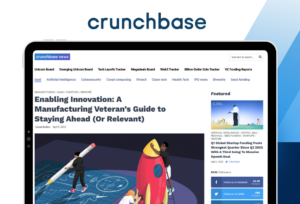Key Factors to Successful ERP Implementation

Enterprise resource planning (ERP) systems can impact your business in big ways, from operations and workflows to ROI. But before you can achieve those big results, you need to start with a thorough and thoughtful planning process around ERP installations and implementations.
The best way to plan ahead is to decide what you want your ERP system to do before you even start the installation. Consider the following key points to help you think through parts of the process that will lead you to a successful ERP implementation.
Establish the most accurate timeframe you can
Estimating an overall timeframe for implementing an ERP system is a good start, but it’s not quite enough. You need to break each component of the implementation into steps, with a set timeframe for each. Those steps will also need to allocate time for any potential and unforeseen issues and additional time for correcting them.
You might consider implementing the ERP system in stages. Add one stage or module at a time. Test each thoroughly within your business operations before moving to the next stage.
You’ll also want to budget time for training employees on how to use the ERP system. Think about how you’d like to structure that training to help guide your time allocations. For example, if you were to break up training by department, individual departments might need more or less time than others.
Budget, and then budget some more
It’s important to account for the cost of your ERP system upfront. But then consider additional budget components, such as licensing fees, system support, and training. Find out ahead of time if they will be included in the overall cost of the system, or if they will be structured as additional fees.
Also, think about what costs you will you need to account for post-installation. For example, if support after installation is part of the system price, consider how long that support lasts and if you are able to extend it if needed (and at what cost).
Make sure your ERP is mobile-friendly
Your business doesn’t always operate on a desktop computer, and neither should your ERP. Your ERP system should be accessible via mobile devices, including smartphones and tablets. That means the display needs to be mobile-responsive, easy to navigate on the reduced screen size, allow for easy data entry.
The need for mobile device accessibility will only increase in the future as technology continues to advance. Your ERP system needs to be designed to allow it to change and grow with technology, rather than being left behind.
Choose experienced ERP partners and installers
Choose an ERP provider that is experienced in implementing ERP systems, not just selling them. For the best experience and results, you’ll want to find a provider with experience in installing ERP systems for businesses like yours. Ask about their experience with similar industries, company sizes, and the number and types of departments involved.
Check your provider’s references
A trusted ERP provider should have no problem supplying you with quality references from current and previous customers. Hopefully, you’ll see impressive testimonials on the ERP provider’s website, but you’ll want to reach out on your own to verify. You should also be able to get references for former or current customers in your geographic area and industry. Contact those companies and speak to customers directly.
If you’re ready to implement or upgrade an ERP, the experts at Decision Resources can help. And to learn more about the benefits of implementing an ERP system for your business, be sure to download our free e-book, available here.
Similar Blogs

Decision Resources Featured on Crunchbase

Chips, drugs, and steel — how to prepare for Trump tariffs





